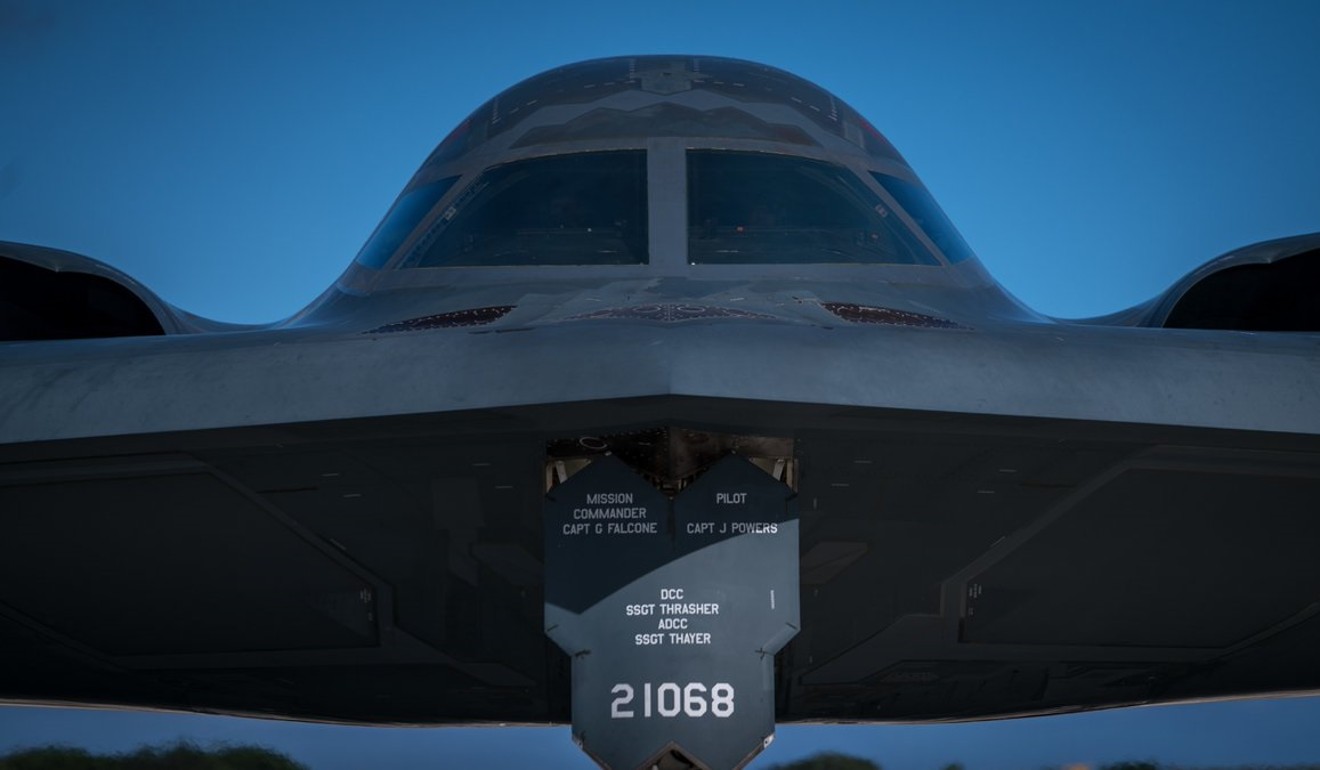
US deployed B-2 stealth bombers to Guam as North and South Korea held crucial talks
The three aircraft will likely be based on Guam during the Winter Olympics in Pyeongchang
The US Air Force quietly deployed three stealth B-2 Spirit bombers to Guam this week as discussions between the North and South Koreans involving the Winter Olympics were about to commence, a move that the service says was scheduled in advance but came at a particularly sensitive time.
The bat-winged B-2s and 200 airmen deployed to Andersen Air Force Base on the US island territory from Whiteman Air Force Base in Missouri. They are part of what the US military characterised as a short-term deployment that is part of the Pentagon’s bomber assurance and deterrence mission in the Pacific. The Air Force has rotated bombers in the Pacific for 15 years in a show of support for its allies in the region.
But the deployment of B-2s during the Winter Olympics in Pyeongchang next month – and shortly after US President Donald Trump taunted North Korea by tweeting January 2 that his “nuclear button” was bigger than North Korean leader Kim Jong-un’s – may be seen as inflammatory in the region. The planes have stealth technology and the ability to carry nuclear weapons, something that the B-1B Lancer bombers deployed to Guam last year do not have.

Marine Lieutenant General Kenneth McKenzie, the director of the Pentagon’s Joint Staff, told reporters at the Pentagon on Thursday that it would be wrong to view the bomber deployment “within the single lens of what it means to the Korean Peninsula.” It affects allies across the Pacific, he said.
McKenzie, asked if the United States is also sending a message to China with the deployment, said “we send a signal to everyone” when the Pentagon moves bombers across the globe.
McKenzie declined to rule out the possibility of air strikes against North Korea during the Olympics, citing the Pentagon’s policy of not talking about future operations.
US Pacific Air Forces disclosed the deployment Wednesday night, and the Pentagon released several photographs of the planes landing on Guam on Monday.
B-2s have been deployed in the Pacific before, however, including briefly in October during a demonstration of resolve in the region. Trump agreed in October to a South Korean request to send more “strategic assets” to the region – a move that the Pentagon left murky, but typically includes the deployment of bombers.

On Tuesday, leaders from the two Koreas met to discuss the Winter Olympics, which will take place in Pyeongchang, close to the border between the Koreas. North Korea agreed to send a delegation of about 500 athletes and officials to the Winter Games, a move widely greeted as an encouraging development that could at least temporarily safeguard peace.
But North Korean officials reserved the right to continue building nuclear weapons. They assured South Korean officials that they are aimed only at the United States – a move that may be somewhat reassuring to Seoul but is unlikely to change the Trump administration’s campaign of “maximum pressure” on Pyongyang to end its nuclear weapons programme.
Trump has showed willingness to ease tension in at least one regard. He and South Korean President Moon Jae-in agreed January 4 to delay a sprawling annual joint exercise known as Foal Eagle until after both the Winter Olympics, which run from February 9 to 25, and the Paralympics that follow March 9 to 18. The exercises typically begin about March 1, and have long been a friction point with North Korea.
Moon gave “huge credit” on Wednesday to Trump for bringing North Korea to the inter-Korea talks, and said Pyongyang’s willingness to talk may be the result of US-led sanctions and pressure. Moon has opposed any US military action against North Korea without his prior approval – something the United States is not required to do, according to a security agreement between Washington and Seoul.

